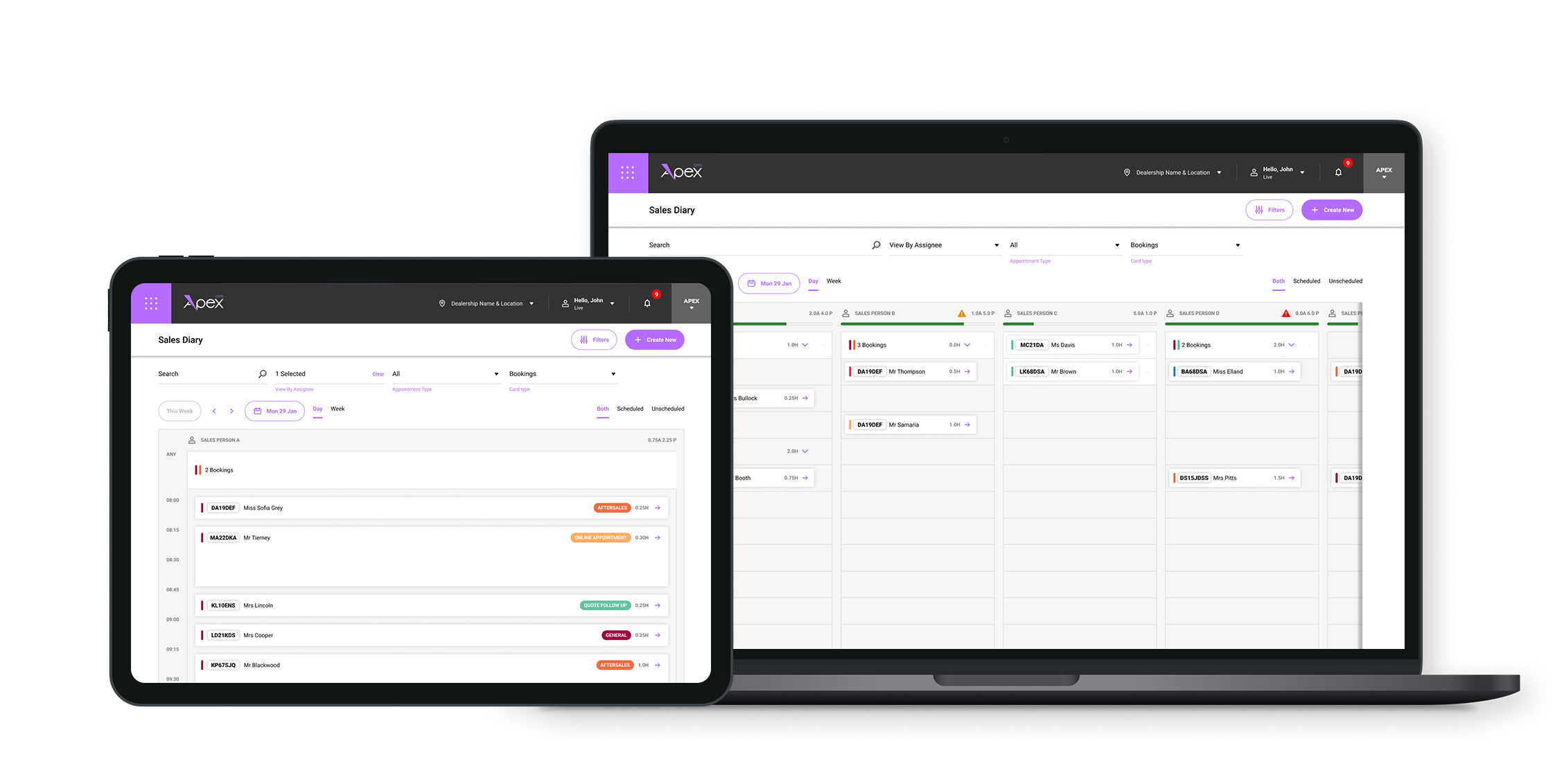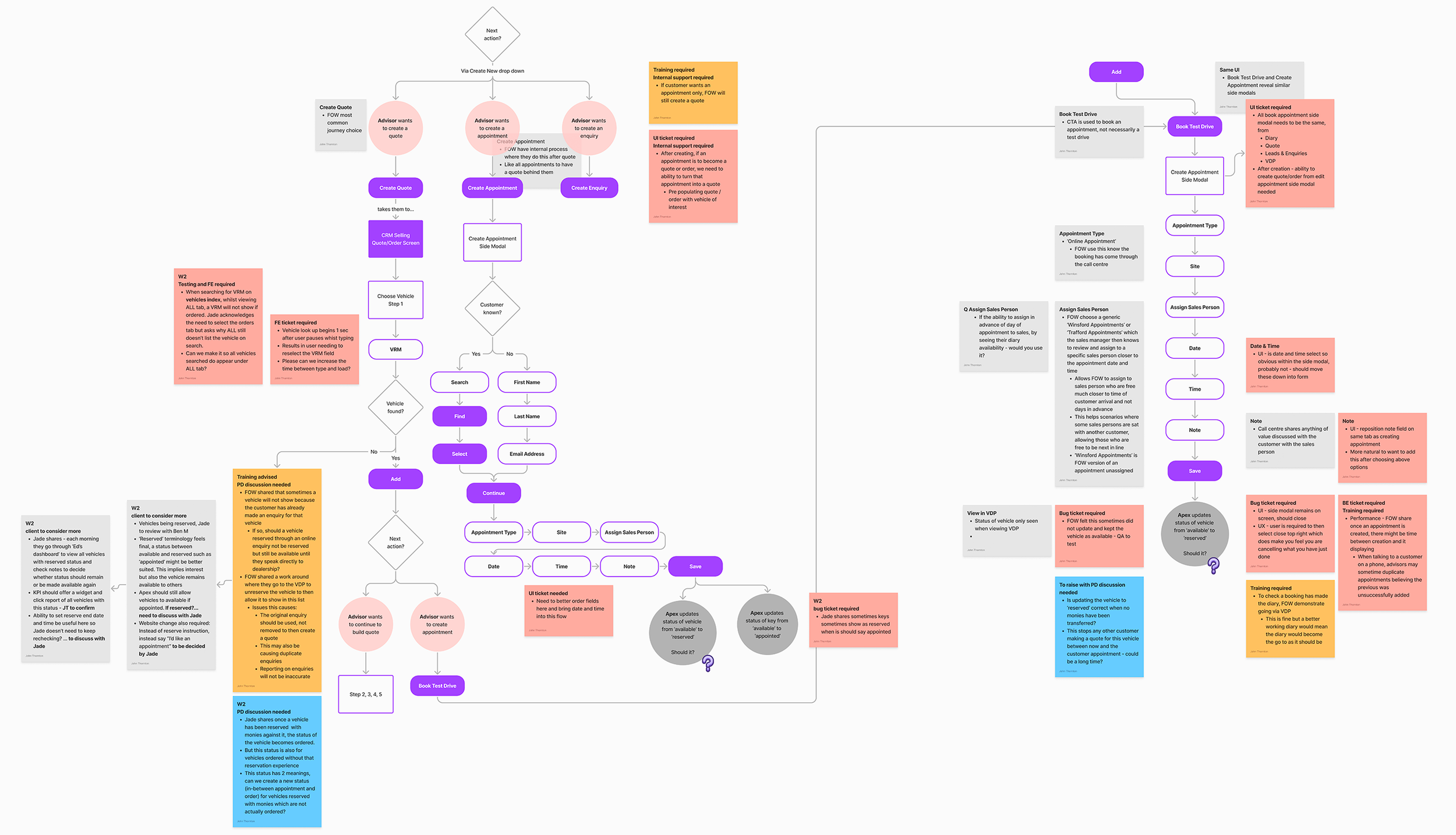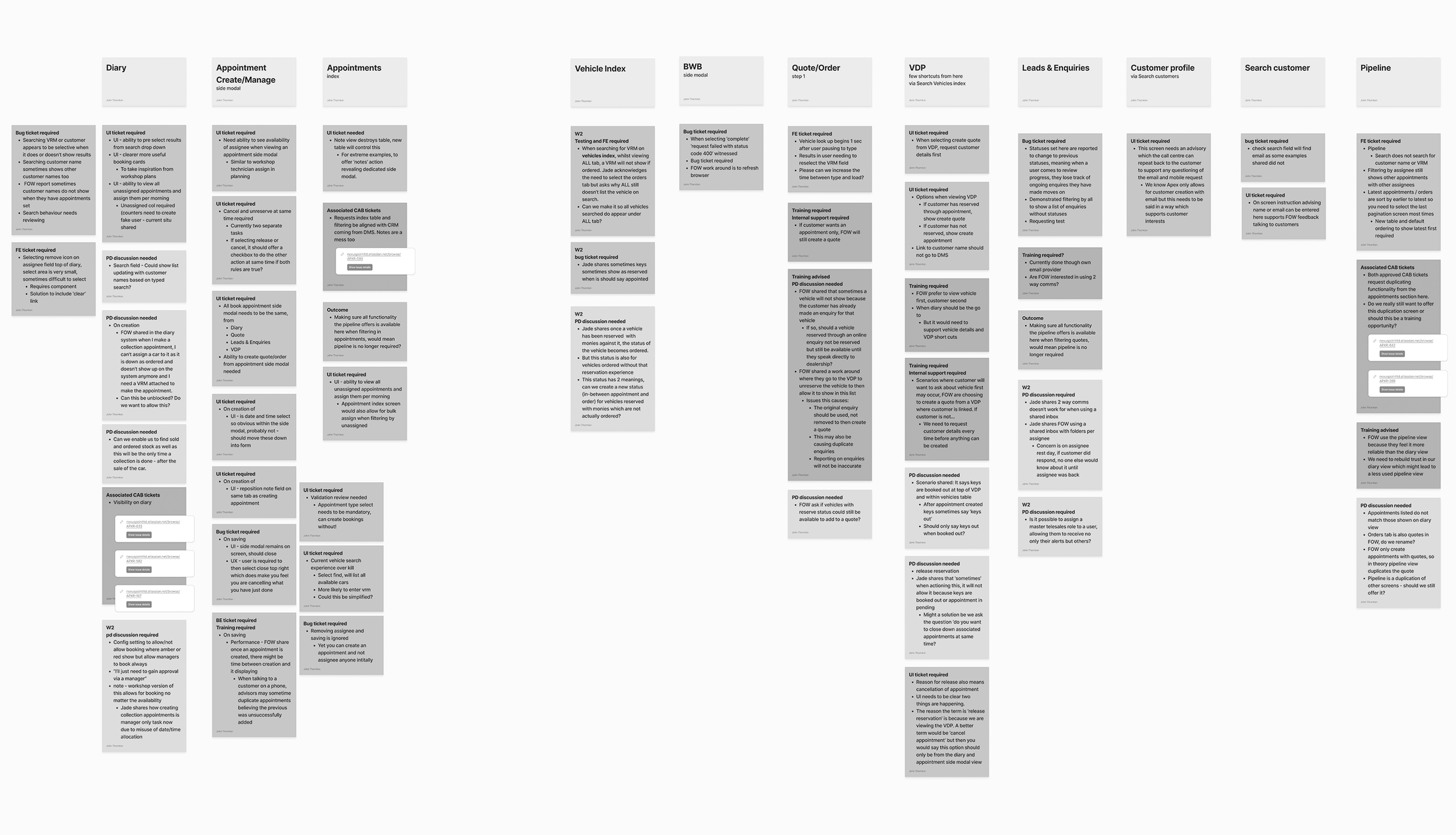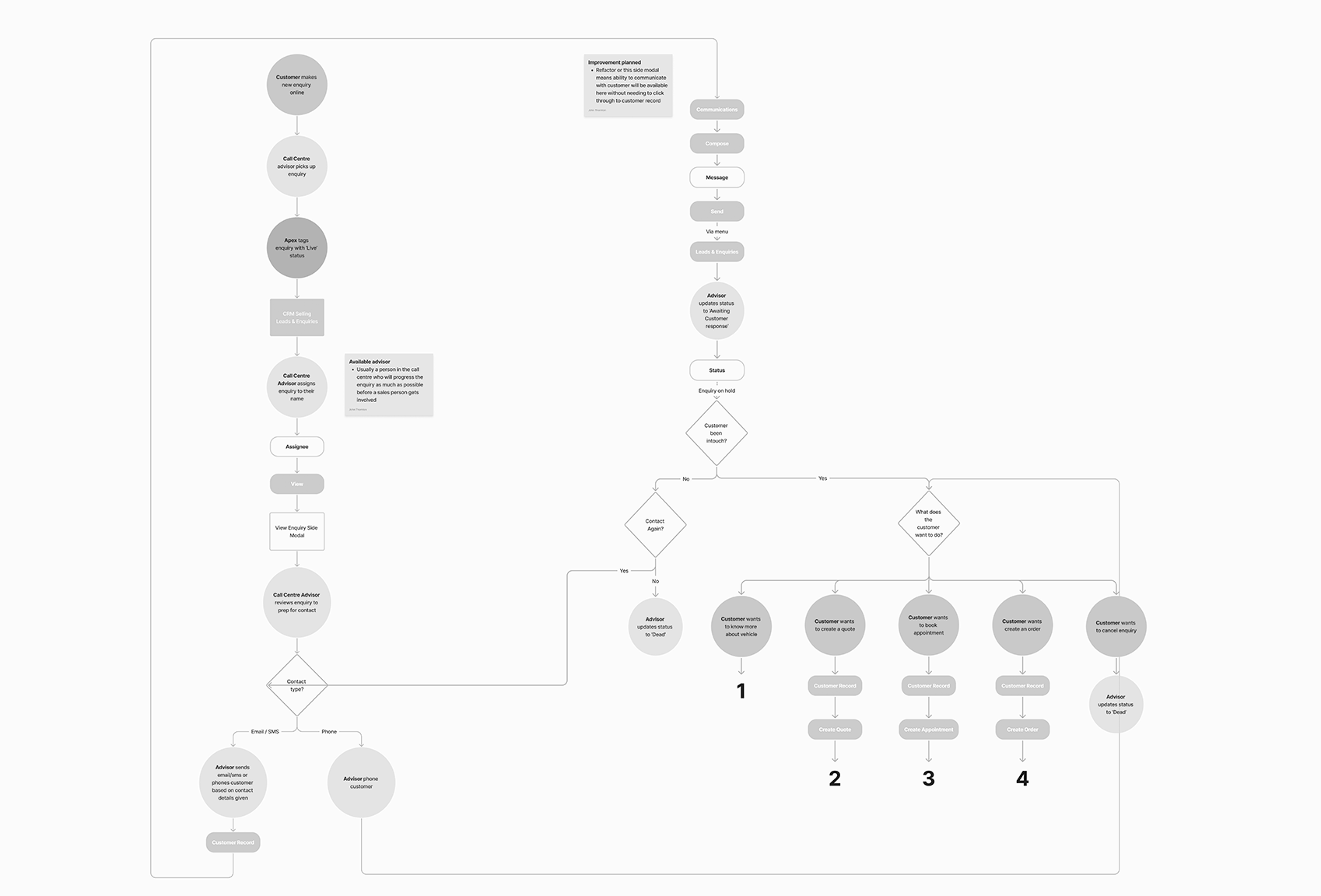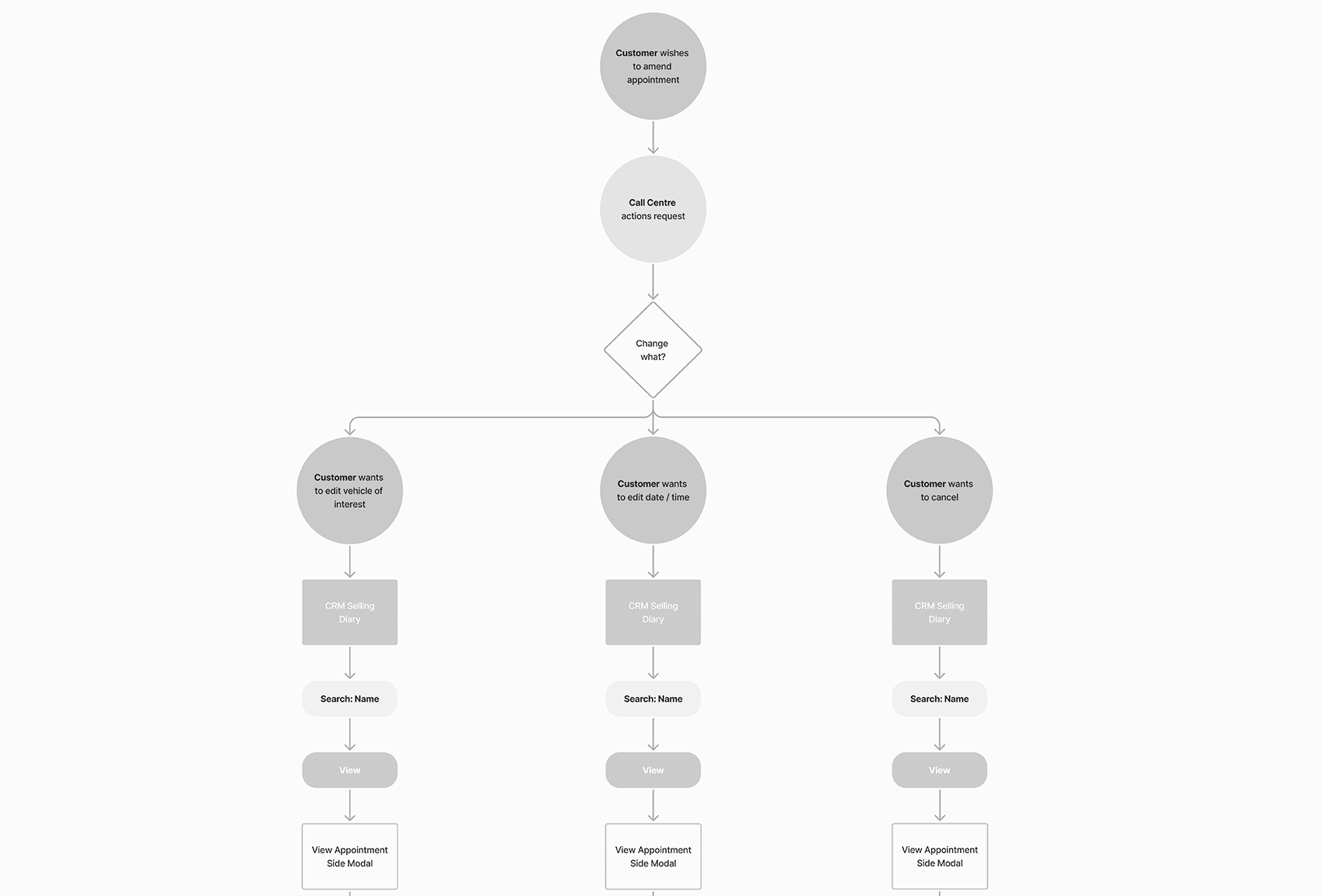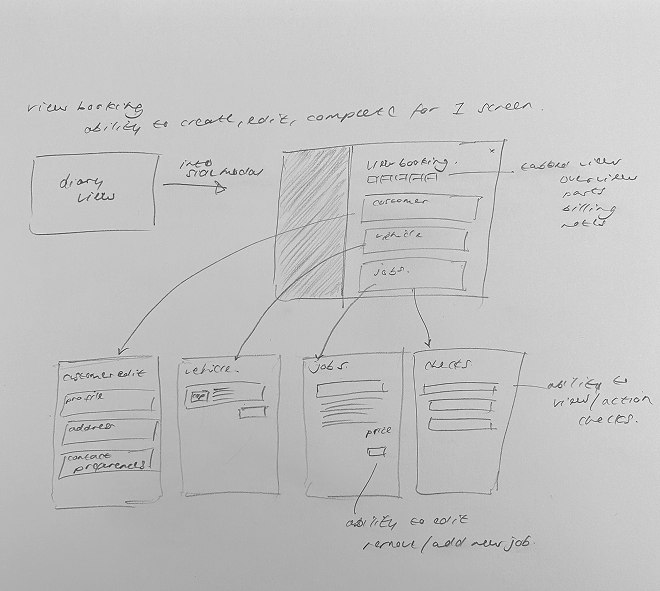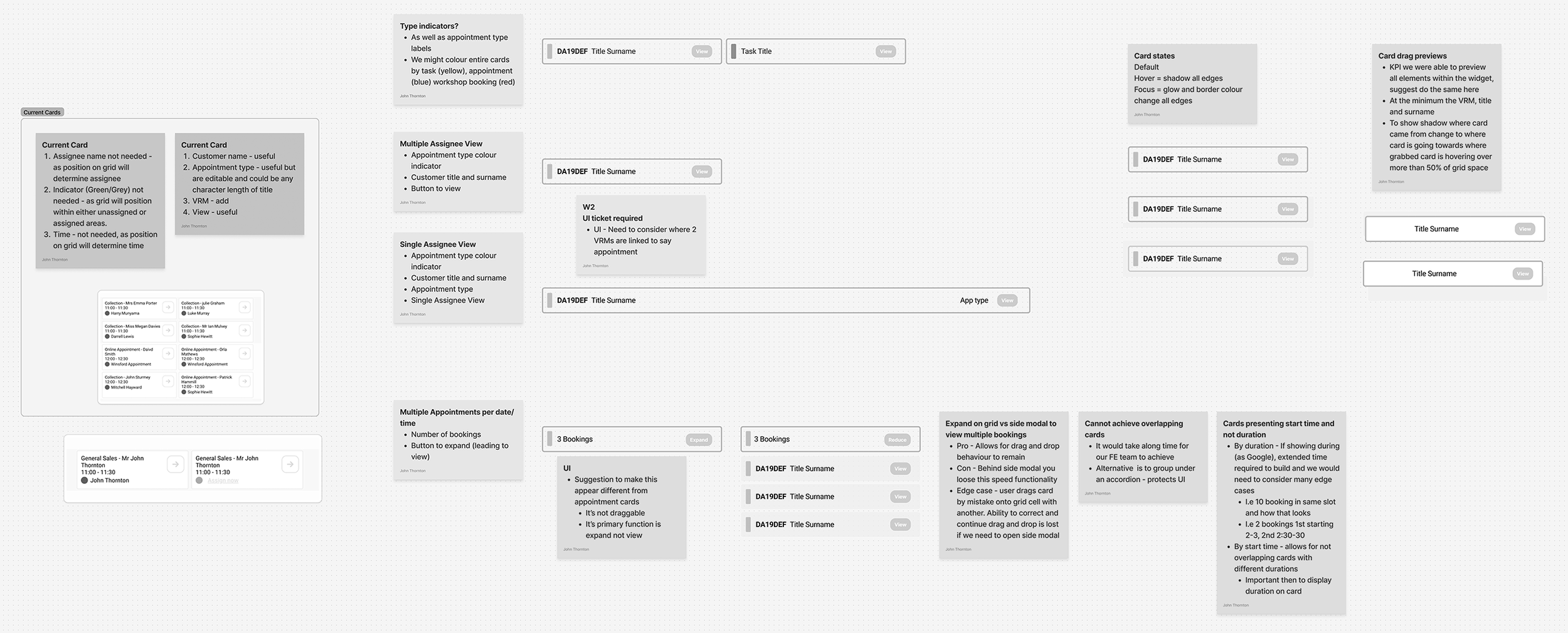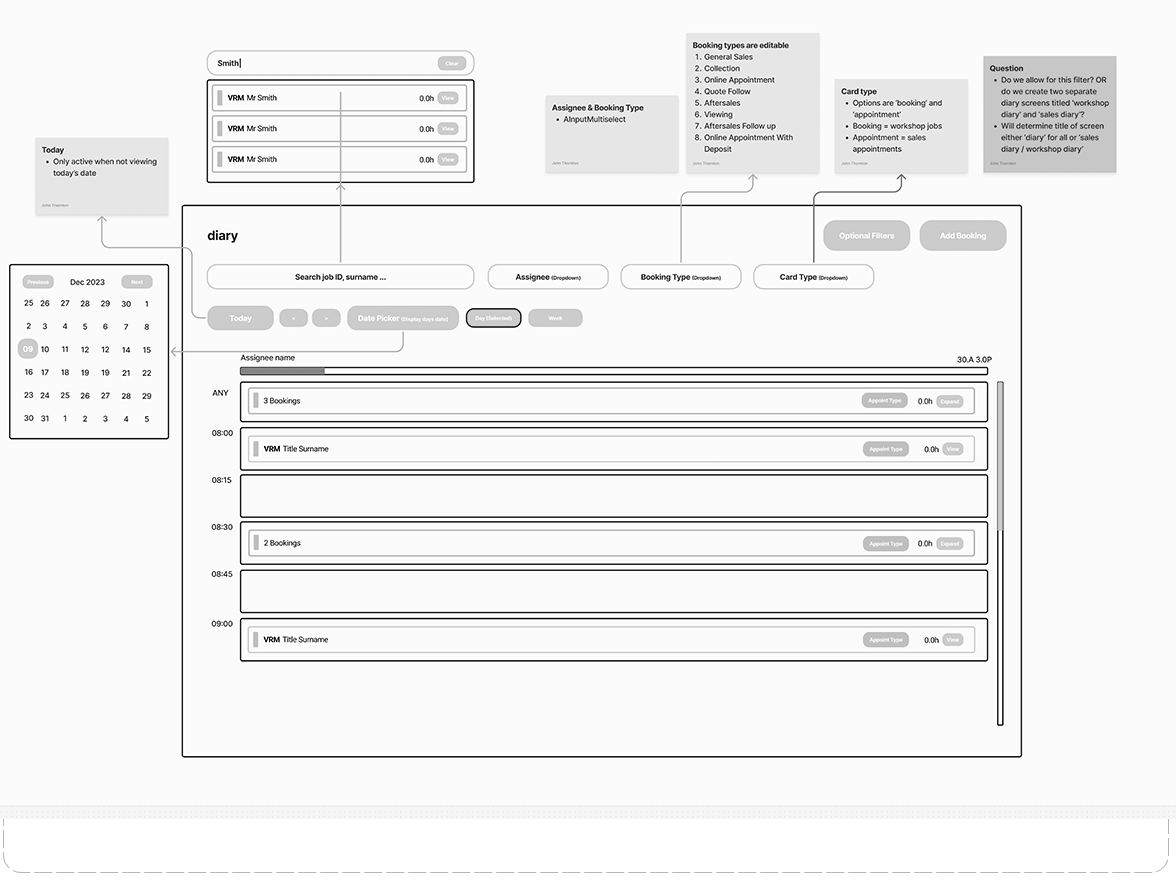Case Study 03
Improved CRM Diary & Appointment Experience (Saas)
Role: UX/UI Designer, Researcher, Project Manager
Team: Product Designer, Front-end
Duration: 1 month
01 The Brief
02 Empatise
03 Define
04 Ideation
05 Design
The Brief
The current software lacks a user-centric diary and appointment feature, originally developed without input from a UX designer. This deficiency has led to low user satisfaction and a reliance on manual processes to manage these critical tasks of scheduling enquiries and orders.
The Challenge
To enhance user satisfaction and productivity among automotive sales and call centre teams, we aim to develop a user-friendly, efficient, and engaging diary and appointment feature. This feature will support effective schedule management, driving productivity and satisfaction.
Key Objectives
My objective is to encourage users to see the improved diary and appointment system as a valuable tool for their daily tasks, resulting in greater satisfaction and communication across teams.
Improve Usability: Make the diary and appointment interface simpler and easier for users to schedule, track, and manage tasks.
Increase Engagement: Add features and incentives that motivate users to regularly use the diary and appointment tool in their daily tasks.
Boost Efficiency: Cut down the time and effort needed to create, edit, and view appointments to help sales and service teams be more productive.
“A good diary system doesn’t just store information, it helps you understand and reflect on it, making it easier to find meaning and take action.”
EMPATHISE
I Conducted A Focus Group With Existing Users
To pinpoint the challenges faced by the car dealership with its existing diary and appointment feature, I organised interviews and focus group sessions, where I carefully listened to a curated group of user experiences. Initially, I delved into understanding their primary interactions within the software, specifically focusing on the diary and appointment functionalities. This exploration prompted discussions about their pain points, frustrations, and the identification of bugs and blockers.
Additionally, I conducted observational studies by actively engaging with users in the car dealership call centre environment. This involved observing users common patterns and workflows as users interacted with customers, further aiding in identifying key issues with the current diary and appointment system.
“To understand the problem, I needed to understand how our software was currently being used, so I asked.”
Observing users common patterns and workflows as users interacted with customers helped identify current process.
“It’s need’s to be simpler to find and edit an existing appointment, fast.”
“As a manager, I need visibility of all my sales team appointments on a single day”.
“A dairy view that identifies sales team capacity, would allow for quicker allocation decisions”.
DEFINE
Affinity Mapping to Identify Issues Per Screen
To define and understand the problem thoroughly, I gathered all feedback received while observing their current processes. This feedback was captured on digital post-it notes and placed throughout various points of the current process flow. These notes highlighted software bugs and areas where UX/UI improvements were needed, as well as decisions requiring input from the product owner.
I then categorised this feedback under specific screen titles, each of which plays a crucial role in the overall diary and appointment experience. By organising the post-it feedback according to screens, I could identify which screens needed the most attention, helping prioritise our plans. This approach also facilitated clear communication among my development team and the product owner, ensuring everyone understood the current issues per screen.
The focus group helped me create the following process flow, which allowed me to identify pain points, training opportunities, and new functionality requirements.
DEFINE
Software Requirements & User Story
As part of this project, I collected user stories and requirements through interviews, surveys, and group discussions. These insights defined the key needs and features for the dashboard solution, ensuring it aligns with user goals and expectations.
“Now I understand, I see users have learnt new ways to use our software, to work for them, ways we didn’t intend. I’m learning from them but now I want to streamline.”
IDEATION
Identifying Better Core Journeys
I mapped and designed three better core process flows to redefine how key scheduling and appointment tasks should be achieved. These flows directly addressed the gaps in the existing system—originally built without UX input—by prioritising user needs and efficiency.
IDEATION
New Customer Enquiry (Phone)
I focused on what the customer is most likely to request, and then mapped out the journey needed to fulfil that request.
IDEATION
New Customer Enquiry (Online)
Depending on where the enquiry came into the dealership, I also had to consider user type.
IDEATION
Request to Edit Appointment
Again, I focused on what the customer is most likely to request change from an existing booking, and then mapped out the journey needed to fulfil that request.
IDEATION
Low-Fidelity
Before wire framing and during brainstorming or workshop discussions, sketching ideas can be the difference between a good idea and a great one. It’s important to capture ‘a brainwave’ whenever they happen.
Rough diary sketches capturing first thoughts in the ideation phase.
Appointment view concepts taking shape through quick explorations.
DESIGN
Low-Fidelity Diary Cards
High-fidelity designs help me to plan the layout and arrangement of interface elements, focusing on structure and functionality without spending time on visual details so soon. I prefer using low-fidelity wireframes because they allow for quicker idea presentation, encouraging more candid feedback from stakeholders who might hesitate to critique a more polished prototype.
I grouped my focus into sections, this area demonstrates my diary card UI planning.
DESIGN
Low-Fidelity Diary Views
High-fidelity designs help me to plan the layout and arrangement of interface elements, focusing on structure and functionality without spending time on visual details so soon. I prefer using low-fidelity wireframes because they allow for quicker idea presentation, encouraging more candid feedback from stakeholders who might hesitate to critique a more polished prototype.
Diary view A - Filtered by single assignee on a single day.
Diary view B - Filtered by multiple assignees on a single day.
Diary view C - Filtered by single assignee on a week view.
Diary view D - Filtered by multiple assignees on a week view.
“Validate your ideas and find usability problems in order to create a final design that works much better.”
DESIGN
Low-Fidelity Booking Process
A new enquiry booking process, allowing users to add new bookings into the dealership, whether source is walk in, phone call or online.
Create Appointment - A customer profile is required before being able to do anything else.
Create Appointment - Choosing the appointment type and capturing any requirements.

